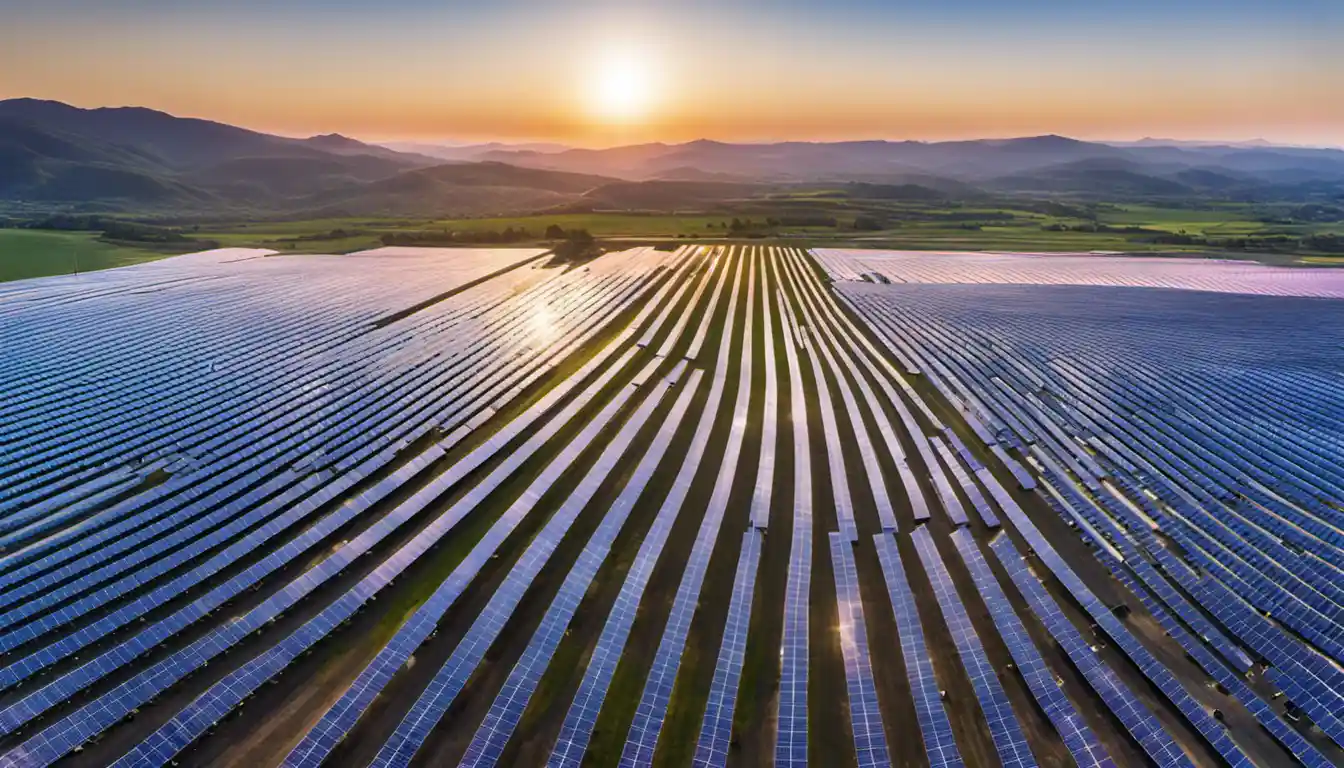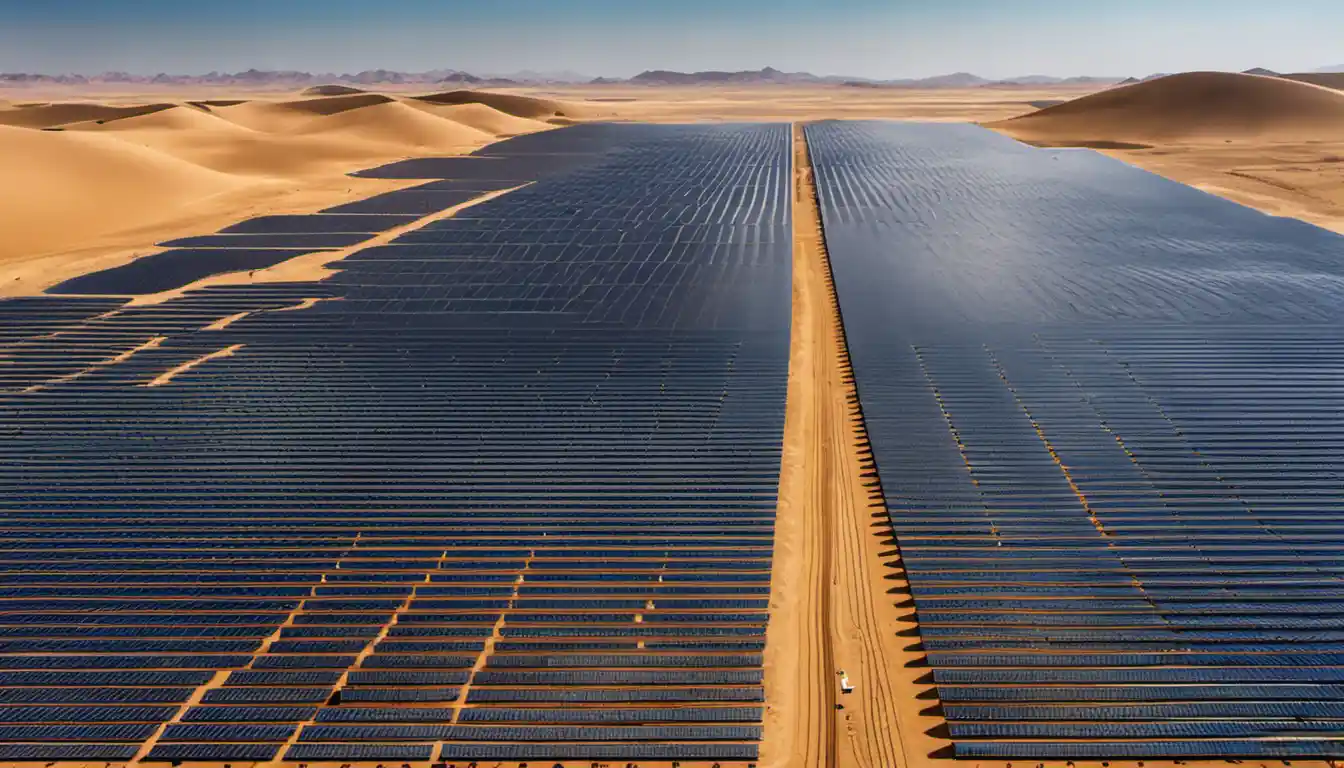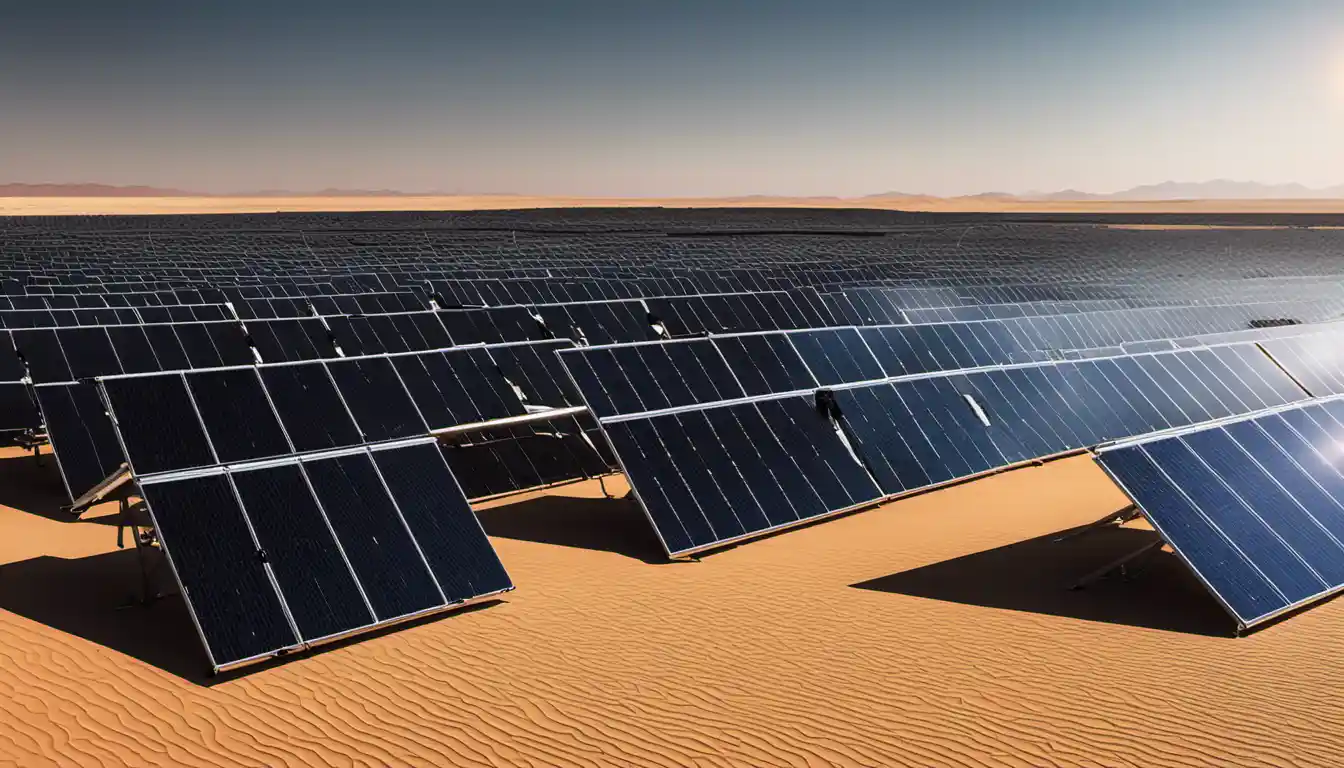What are Solar Farms?
Solar farms have several pros, including offering a renewable, clean source of energy that can reduce reliance on fossil fuels and decrease carbon emissions thus contributing to climate change mitigation. They also provide opportunities for job creation. Cons include the large amount of land they require that could be used for other purposes like agriculture, potential disruption of local ecosystems, and the initial high costs of installation. Moreover, solar farms only produce power when the sun is shining, which doesn’t make it a consistent energy source.
How do Solar Farms Work?
Solar farms operate by utilizing a large array of solar panels, usually placed on unused land in a spot with a high amount of sunlight exposure year-round. Sunlight hits the photovoltaic (PV) cells in solar panels, knocking electrons loose and creating electrical current. This direct current (DC) is then converted into usable alternating current (AC) through inverters incorporated within the system. The power is then available to be used on the grid, in homes, and businesses.
How Much Energy do Solar Farms Produce?
The energy production of solar farms varies widely based on factors such as their size, the amount of sunlight they receive, and the efficiency of the panels and inverters used. However, an average solar farm can potentially produce up to 1 Megawatt per hour – enough power to supply around 650 average homes.
Understanding the Benefits of Solar Farms
Exploring the benefits of solar farms is pivotal in our guide on “solar farms pros and cons”.
Utilization of Renewable Energy
Solar farms tap into the sun, an inexhaustible resource that’s significantly abundant across the globe. This makes solar power a renewable source that aids in the reduction of dependence on fossil fuels, contributing substantially to our battle against climate change.
Lower Maintenance Needs
Once installed, solar panels require little maintenance, and their overall functional lifespan might extend to 25 years or more, translating to long-term savings.
Environment-Friendly

Solar farms produce energy without emitting harmful greenhouses gases unlike traditional energy production methods, playing a crucial role in environmental preservation.
Noise-Free Operations
Unlike other forms of renewable energy like wind turbines, solar farms operate silently, creating an environment that’s noise pollution-free.
Long-Term Returns on Investment
Solar energy’s high upfront costs can be offset by the long-term savings on energy bills and the potential earnings from exporting excess power back to the grid.
Decrease in Reliance on Fossil Fuels
Solar energy reduces reliance on diminishing resources like coal and oil, paving the way for energy independence.
Positive Impact on Local Economy and Job Creation
Installation, maintenance, and upgrading of solar farms can increase job opportunities in local communities, positively influencing the economy.
Exploring the Disadvantages of Solar Farms
In this “solar farms pros and cons” discussion, balance necessitates that we also explore the less shiny aspects of solar energy.
Potential Threat to Local Ecosystem

Large-scale solar farms can potentially disrupt local ecosystems and wildlife, particularly in desert areas where sensitive species might be at risk.
High Initial Costs
Installation of solar farms requires high upfront costs. Although the long-term savings are substantial, the initial expenses could be a barrier for some.
Challenges with Solar Waste Management
Long term, dealing with expired or damaged solar panels raises environmental concerns. While they can be recycled, facilities and processes for recycling are not yet widely available or efficiently established.
Dependence on Season and Sunlight Availability
Solar farms are bound by climate and weather restraints – they simply can’t produce electricity without sunlight.
Costly Energy Storage Solutions
For constant power supply during night hours or cloudy days, energy storage solutions are critical but can be expensive.
Extensive Space Requirements
Solar farms require large tracts of land which might compete with other land uses, further escalating land values.
Inefficiency of Existing Solar Technology

On average, solar panels convert only about 20% of the sunlight they absorb into electricity, making it rather inefficient compared to some other energy sources.
Uncontrollable Energy Production
Solar farms don’t offer a constant and stable power production matching to power grid demands. Energy output can vary on a daily basis depending on the weather and season.
Debunking Myths and Misconceptions about Solar Farms
Misperceptions are a part of any emerging technology and solar farms are no exception.
In our exploration of “solar farms pros and cons”, it became evident that it’s important to understand the advantages and disadvantages of solar energy and differentiate them from general myths and falsehoods.
Is there a viable solution for Solar Waste?
A legitimate concern regarding solar farms’ sustainability regards solar waste. While recycling facilities aren’t yet mainstream, research and advancements are ongoing to develop practical, environmentally friendly solutions to deal with waste from expired solar panels.
Can Solar Farms be made more Efficient?
Although solar technology is less efficient compared to fossil-based resources, focused research efforts are underway to boost its effectiveness. We’re seeing a continual increase in the conversion efficiency of solar cells, which is an optimistic trend.
Revealing the Future of Solar Farms
The future of solar farms looks promising, given our increasing dependence on renewable, clean energy sources. The push for renewable energy adoption and the ramped-up research and development in efficient and cost-effective solar technology hint at a brighter future for this field. Our deep-dive into “solar farms pros and cons” has made one thing clear: the potential of solar energy is immense, and while current challenges exist, they are not insurmountable.
Concluding Remarks on Solar Farms: Are they worth the Investment?
Weighing the pros and cons, investing in solar farms seems proportionately more advantageous than unfavorable. While the ride may be bumpy at times considering the cons, the significant benefits and the prospective future of this industry tilt the scale towards positivity. Let’s keep harnessing the sun, for it promises a future where the lights never go out.



